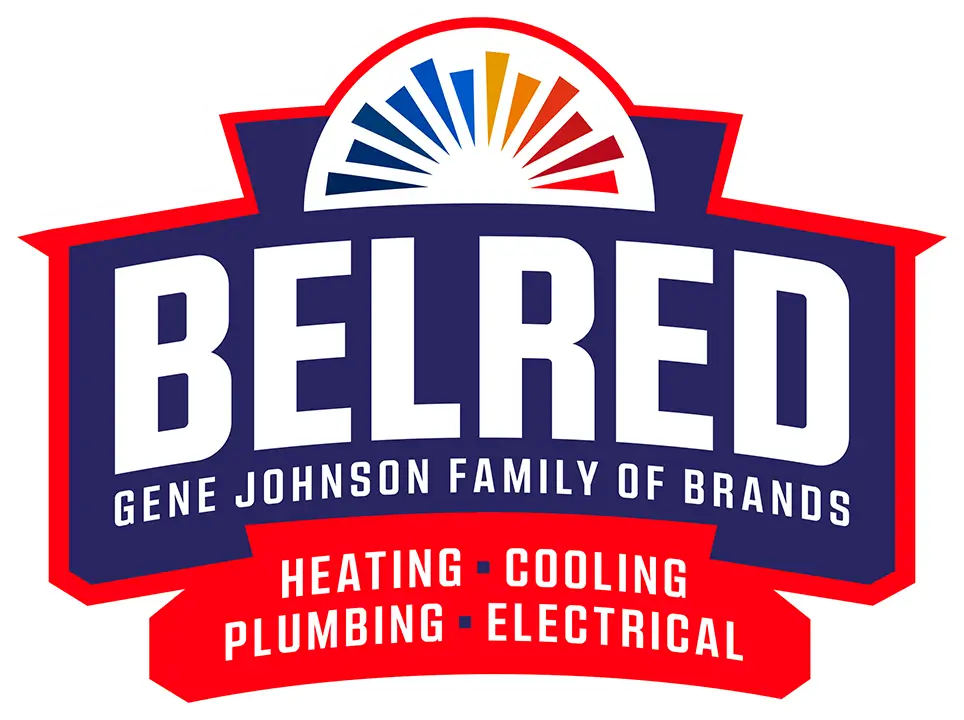When winter’s chill sets in across Mill Creek, you need a reliable heating system to keep your home warm and comfortable no matter how low the temperatures drop. If your current heat pump is getting up there in age or struggling to keep up, it may be time to consider a replacement.
An undersized or improperly installed heat pump will run constantly trying to maintain your desired temperature, leading to sky-high energy costs and premature breakdowns. Conversely, an oversized unit will cycle on and off frequently, providing uneven heating and poor dehumidification.
That’s why local homeowners have trusted the HVAC experts at BelRed for over 38 years to guide them through the heat pump replacement process. From precise load calculations to equipment recommendations, our team takes the guesswork out of finding the perfect heating solution for your needs.
We work with all the top product lines and only employ certified technicians for installations. Whether you need a basic air-source model or a premium geothermal system, BelRed ensures a flawless setup that maximizes energy efficiency from day one.
Don’t let another winter pass shivering with an ineffective, failing heat pump. Call BelRed today at (855) 345-6161 to schedule your free replacement consultation!
(855) 345-6161BelRed’s Heat Pump Installation / Replacement Process in Mill Creek, WA
When it’s time for a new heating system, you want that installation done right from the jump – no ifs, ands, or buts. At BelRed, we follow a thorough, meticulous process to ensure your heat pump replacement goes off without a single hitch. Here’s how we get it done by the book:
Sizing It Up
Before we even start talking equipment, one of our comfort advisors will come out and perform a detailed load calculation tailored to your home’s layout, insulation levels, window exposures – the whole nine yards. Proper sizing is crucial to avoid short-cycling or excessive energy waste.
Finding Your Match
Once we’ve crunched the numbers, we’ll guide you through selecting the perfect new heat pump system for your needs and budget. We’re talking everything from basic air-source models up to premium geothermal units with all the bells and whistles. Our team partners with all the major manufacturers to find that ideal fit.
Prepping the Job
When that shiny new equipment arrives, our installers will do a full walkthrough of the work area and map out where all the refrigerant lineset routing, condensate drainage, and ductwork connections will be run. We take extra precautions like laying down runners to protect your home’s interior.
Bringing It All Together
Our certified heat pump techs follow all manufacturer guidelines and local codes to the letter during installation. We’ll properly establish the electrical circuit, mount those indoor/outdoor units, then meticulously run and pressure test the refrigerant lines. No shortcuts, just by-the-book workmanship.
Putting It Through Its Paces
Before we sign off, we’ll fire up the new system and put it through comprehensive performance testing. We’ll verify all operations, make final calibrations, walk you through that fancy thermostat, and ensure it’s operating at peak efficiency from day one.
With BelRed, you can feel confident your heat pump installation will be done right by certified pros – no cutting corners. Just prompt, meticulous work to maximize heating performance and energy savings for years in Mill Creek’s climate.
Heat Pump Installation / Replacement FAQ
- Time for a Heat Pump Upgrade? Here's How to Tell
- Picking the Perfectly Sized Heat Pump for Your Mill Creek Home
- Why That Premium Heat Pump Is Worth the Investment?
- So, How Many Days Until I'm Enjoying That New Heat Pump?
- Your Step-by-Step Guide to Installation Day
- How Do I Prepare My Home for a New Heat Pump Installation?
- Air-Source vs Ground-Source: Which Heat Pump Fits Your Needs?
- Don't Overlook Climate When Choosing Your Heat Pump
Time for a Heat Pump Upgrade? Here's How to Tell
Like any hard-working piece of equipment, heat pumps simply don’t last forever. Even with diligent maintenance, the day will come when replacing that aging system starts making more sense than repeatedly sinking money into repairs. But how can you tell when it’s nearing that point? Here are some telltale signs it’s likely time for an upgrade:
It’s Pushing Decades
Most heat pumps have an expected lifespan of around 15 years with proper care and maintenance. If yours is creeping up on the 20-year mark and requiring more frequent repair calls, replacement should definitely be on your radar.
Your Utility Bills Are Out of Control
While no one likes paying those monthly energy statements, a sudden unexplained spike in heating costs could mean your system is running way too inefficiently and working overtime. Those high bills add up fast.
Uneven Heating & Cooling
If certain rooms or levels always feel colder or warmer than others no matter the thermostat setting, it could indicate airflow or ductwork issues that are tough to remedy cost-effectively on an older heat pump.
You’re Battling Moisture Issues
Any excess moisture buildup around your indoor or outdoor units is typically the sign of a refrigerant leak. Those leaks tend to be expensive repairs that may not make financial sense for an aging system.
Your Repair Tech Is on Speed Dial
If you’re on a first-name basis with your HVAC repair company from constant service calls each season, that’s a surefire indicator that critical components are wearing out and replacement is imminent.
While repairs can squeeze out some extra life initially, there comes a point where a new high-efficiency heat pump pays for itself quickly through lower energy bills and fewer headaches. Don’t wait until your system leaves you out in the cold!
Picking the Perfectly Sized Heat Pump for Your Mill Creek Home
This seems like it should be a pretty straightforward decision, but getting the sizing right on a new heat pump actually requires some real expertise. Choosing a system that’s properly sized for your home’s heating and cooling needs is crucial – go too small or too large, and you’re asking for a world of inefficiency and discomfort.
The Pitfalls of Improper Sizing
An undersized heat pump will run itself ragged trying to keep up once winter’s chill really sets in. It’ll struggle to heat every room evenly and rack up astronomically high energy bills in the process. Not exactly what you want from a fresh installation.
But going with an oversized unit also backfires in its own way. It’ll actually heat your home too rapidly, causing excessive cycling that puts crazy strain on components. You’ll likely end up with hot/cold rooms, dehumidification issues, and yes – higher utility costs once again.
The Goldilocks Solution
The trick is having your home’s precise heating and cooling loads calculated by a seasoned pro. They’ll do an in-depth evaluation of your square footage, insulation levels, window exposures, the works. Only then can they recommend that “Goldilocks” heat pump that’s the perfect fit for your needs.
But even those calculations are just one piece of the puzzle. You’ll also need to factor in your home’s ductwork design and airflow capabilities. Having undersized or poorly designed ducts can severely hamper that shiny new system’s performance.
Sizing a heat pump isn’t something to guesstimate or take shortcuts on. Bringing in a reputable HVAC contractor with legitimate expertise in load calculations and ductwork assessments is the only way to ensure your new installation keeps you reliably comfortable without excess costs.
Why That Premium Heat Pump Is Worth the Investment?
When it comes time to replace your heat pump, you’ll probably be weighing those basic models against the premium high-efficiency options. And yeah, those top-tier units tend to come with a bigger sticker price upfront. But they also come packed with some serious long-term benefits that make them worth the investment for many Mill Creek homeowners:
Lower Energy Costs
This one’s the obvious big selling point. Modern high-efficiency heat pumps use advanced components and refrigerants to drastically reduce electrical usage compared to older inefficient models. You’ll see those savings adding up on your utility bills right away.
Improved Comfort
High-efficiency units typically feature goodies like variable-speed fans and multi-stage heating/cooling to maintain way more consistent temperatures throughout your home. Say goodbye to those hot/cold rooms and that clammy feeling when humidity removal falls short.
Quieter Operations
Those premium models also prioritize quiet, discreet operation with sound-dampening insulation and lower decibel fan motors. You’ll barely even notice when the system kicks on compared to that old noisy monster.
Eco-Friendly
By reducing electrical demand and using greener refrigerants, high-efficiency heat pumps have a much smaller environmental footprint in terms of emissions and such. It’s a more sustainable choice for the eco-conscious.
Increased Home Value
Just like any major home upgrade, installing new high-efficiency HVAC can potentially increase your home’s assessed value and curb appeal for future buyers down the road.
While that upfront investment is higher, the long-term energy savings and added benefits frequently allow those high-efficiency heat pumps to pay for themselves in just a few years. For lots of local homeowners, it’s an easy choice to make the upgrade despite that higher price tag.
So, How Many Days Until I'm Enjoying That New Heat Pump?
This is one of those questions that gets an “it depends” answer a lot from HVAC contractors. The honest truth is, there’s no one-size-fits-all timeline when it comes to heat pump installations. That project duration can vary pretty widely based on the specific situation and any curveballs thrown your way.
A Simple Swap? Potentially 1 Day
Like if we’re talking a nice straightforward swap-out where all the ductwork, electrical, and refrigerant lines are already accounted for? A skilled crew could potentially knock out that basic installation in a single day’s work if everything cooperates. We’re talking around 6-8 hours from truck arrival to final system start-up typically.
But Throw In Some Complications? All Bets Are Off
Start throwing some complicating factors into the mix though, and all bets are off. Need to upsize to a higher-efficiency unit with new ductwork requirements? Or maybe you’ve got some dated electrical that needs bringing up to code? Or even just working in a tight crawlspace or attic can seriously slow things down. Any of those curveballs could easily tack on several additional hours or push it into a multi-day job.
A Full System Overhaul? Probably Multi-Day
And if you’re looking at a full-system replacement from the ground up – new furnace, coils, ductwork, the whole nine yards? You’re most likely looking at a multi-day project no matter how you slice it. Probably an absolute minimum of 2-3 days just to do it properly without any ridiculous rushed job.
The Key? Patience and Getting It Right
Here’s the key thing to understand though – a reputable contractor isn’t going to take shortcuts or hack things together just to make your timeline. They’re going to do it right according to proper code and manufacturer specs from day one. That’s the only way to ensure it runs problem-free for years. Rushing leads to sloppy mistakes.
So if you get a multi-day estimate for your installation, don’t get frustrated. It likely just is what it is in terms of the time required to do it meticulously without cutting corners. A thorough job now prevents headaches and issues down the road. That’s the name of the game!
Your Step-by-Step Guide to Installation Day
So you’ve picked out your new heat pump system and scheduled that installation date. But what exactly goes down once those HVAC techs show up at your door? Here’s a quick rundown of how it’ll likely all go down:
Workspace Prep
First off, expect a little workspace prep and protection. The crew will probably lay down some runners or drop cloths to keep your floors safe from any dirt and debris. They may also seal off the work area with some plastic sheeting to contain dust and mess.
Out with the Old
With the staging area set, they’ll get to work disconnecting and removing your old indoor and outdoor heat pump components. This involves reclaiming any remaining refrigerant per EPA rules, detaching electrical, and carefully maneuvering those old units out of their space.
In with the New
Once the area is cleared out, the real installation fun begins! They’ll start positioning and securing the new indoor and outdoor units according to manufacturer specs. This could involve some light construction work to properly mount components or modify ductwork connections as needed.
Refrigerant Lines
With the units in place, your HVAC team will then meticulously run new refrigerant lines between the indoor/outdoor sections. These lines have to be properly sized, routed, insulated, and leak tested to ensure zero refrigerant escapes.
Charge It Up
Speaking of refrigerant, that’s the next crucial step – carefully charging the new system with the precise amount specified by the manufacturer. Too much or too little and you’re asking for efficiency issues.
Final Connections
Finally, they’ll establish all new electrical connections, thermostat wiring, and condensate drain lines. Once everything is fully connected, they’ll fire it up and spend ample time testing, calibrating, and ensuring the heat pump is operating at peak performance.
The typical installation takes at least 6-8 hours of steady work by that crew. More complicated jobs could spill over into multiple days. But you can expect frequent communication from your lead tech throughout so you know what’s happening.
How Do I Prepare My Home for a New Heat Pump Installation?
With installation day for that shiny new heat pump system approaching, it’s time to do a little prep work around the house to make sure things go as smooth as possible for you and that HVAC crew. A few simple steps can go a long way in preventing any unnecessary headaches or hassles:
Clear the Work Zone
Take a look at where your indoor and outdoor heat pump components are located. Does the indoor area have any furniture, decor, or clutter that could get in the way or risk damage? Now’s the time to relocate any non-permanent items to another room temporarily. Same goes for clearing any yard debris, toys, or obstacles away from the outdoor condenser space.
Secure Pets
Having a curious dog or cat underfoot while workers are trying to maneuver heavy equipment is just asking for trouble. Make sure any pets are properly secured in a separate room or taken over to a friend’s for the day to avoid any accidents or escapes.
Allow Access
Your HVAC crew is going to need easy access to attics, crawlspaces, basements, or anywhere else ductwork may be running. Make sure you’ve removed any blockages and that entrances aren’t obstructed so they can smoothly come and go as needed.
Protect Valuables
While most crews take precautions, it’s always wise to secure any valuable items like electronics, jewelry, or important documents just in case an accidental spill or damage occurs during the installation process.
Plan for Noise
Let’s face it – HVAC work isn’t exactly a quiet affair. There’s going to be some unavoidable noise from power tools, drilling, and general construction happening. If you plan to be home, make arrangements to be in another part of the house away from the work zones.
A few simple prep steps like these help the installation crew do their job efficiently with minimal disruptions or headaches. A little proactive coordination prevents a lot of potential hassles once those techs arrive on install day!
Air-Source vs Ground-Source: Which Heat Pump Fits Your Needs?
When it comes time to replace your home’s heating and cooling system, you’ve got a couple different heat pump options on the table – air-source and ground-source (geothermal). Both are more energy-efficient alternatives to traditional gas furnaces and ACs, but they work in distinctly different ways. Here’s the main differences:
Air-Source Heat Pumps
This is probably what first pops into your head when you hear “heat pump.” Air-source units are basically two systems in one that provide heating and cooling for your place.
They work by transferring heat between the inside air and outside air using refrigerant lines and an outdoor compressor, similar to a central AC. In summer mode, it pulls heat from inside and dumps it outdoors to create cooling. Come winter, the process reverses to extract what little heat is in the outside air and bring it indoors for heating.
Air-source heat pumps are generally cheaper upfront than ground-source options. They’re also easier installs since you’re not burying underground loops. The downside is they can get inefficient once outdoor temps drop below freezing.
Ground-Source (Geothermal) Heat Pumps
Rather than transferring heat to and from the outside air, ground-source heat pumps tap into the relatively constant temperature of the earth itself as the heat source/sink.
These systems use a buried underground loop filled with refrigerant to absorb heat from the ground in winter and discharge it in summer. Since ground temps stay pretty steady year-round, geothermal systems don’t lose efficiency during extreme cold or heat like air-source units.
While pricier upfront due to that loop installation, ground-source heat pumps make up for it with exceptional energy efficiency and low operating costs over their lifetime. They also require less maintenance since the compressor is housed inside.
So which heat pump is the smarter choice? It often comes down to your home’s setup, budget, and goals for efficiency vs upfront costs. Having an HVAC pro assess your situation can help you make the ideal call.
Don't Overlook Climate When Choosing Your Heat Pump
When you’re weighing those air-source versus ground-source heat pump options, another major factor to consider is our lovely Mill Creek climate and how it plays into each system’s performance.
Let’s start with air-source heat pumps. These units excel at providing efficient heating and cooling during our relatively mild shoulder seasons of spring and fall. They can handle most of what our winters dish out too…at least until we get those periodic deep freezes.
See, once outdoor temps drop below 25-30°F, air-source heat pumps start becoming much less efficient at pulling what little heat energy there is from the outside air. Their output and efficiency plummet, forcing them to rely more on expensive backup electric resistance heating to keep your place warm.
That’s where ground-source (geothermal) heat pumps shine. Since they rely on the constant 50-60°F temperature of the earth rather than the air, their performance doesn’t degrade during our coldest winter snaps. They just keep on chugging along at maximum efficiency no matter what nature throws our way.
Of course, that year-round consistent performance comes with a bigger upfront price tag for the underground loop installation. So for some Mill Creek homeowners, an air-source heat pump backed up by a gas furnace may make more financial sense despite those periodic efficiency dips.
The bottom line? Our climate’s temperature extremes mean there’s no true one-size-fits-all heat pump solution. You really need to weigh your needs, budget, and individual situation. An experienced HVAC contractor can run the numbers and guide you toward the ideal heating/cooling plan for your home.
Stay Comfortable Year-Round with BelRed's Flawless Heat Pump Installs
When it comes to keeping your Mill Creek home comfortable through every season, the quality of your heat pump installation is just as crucial as the equipment itself. Even the fanciest, highest-efficiency system is only as good as the workmanship done to properly size, set up and calibrate it for your home’s needs.
And that’s where the pros at BelRed really separate themselves from the pack. With over 38 years of experience tackling heat pump installations across the area, our team has the hard-earned expertise to get it 100% right from day one. No exceptions, no shortcuts.
From crunching those comprehensive load calculations to ensure the perfect equipment sizing…to carefully establishing every refrigerant line and electrical connection per code…to meticulously testing and tweaking operations until peak performance is achieved – we follow a thorough, by-the-book process on every single job.
We also only employ NATE-certified installation technicians who’ve gone through rigorous training for all the latest techniques with major heat pump brands and models. With that skilled workmanship, you can feel confident your new installation will deliver reliable, energy-efficient heating and cooling for years to come.
And because we get that investments like these aren’t cheap, BelRed offers flexible financing plans to fit virtually any budget. We’ll work our tails off to find a solution that makes sense and provides complete peace of mind.
Don’t get caught sweating or shivering with an inefficient, failing heat pump for one more season. Call BelRed today at (855) 345-6161 to schedule a free consultation and replacement estimate! We’ll make sure you can stay comfortable all year long.
YEARS
Since 1986
The Gold Standard in Heating & Cooling
At BelRed, we bring you greater comfort and efficiency to your home. We offer a Lifetime Limited Warranty on all heating, cooling, plumbing & electrical jobs – backed by our expert HVAC technicians. Whether you are in the market for a heat pump, mini-split, furnace, or air conditioner, we have an extensive list of high-end products.
BelRed Heating, Cooling, Plumbing & Electrical is licensed, bonded and insured. From a wide offering of services to an extensive product line, BelRed brings innovative solutions to every job. Call us today and always have a friend in the home services industry.
What Our Clients Say
Dustin H. Nick E., and Cody M. installed our new heat pump in a professional manner: All work was done as promised and onschedule. All three technicians deserve a 5 star rating.
Russ H was here today and fixed a problem that I had with my A/C. I’ve had several people coming before and never had success but he took the time and his great knowledge and fixed my problem. I would love to thank him for that a million times! Jill Motaman
Ray B and Nick E did an excellent job installing our new furnace. I was also pleased with the service that I received from Jake the day before regarding the inspection of the heating system and recommendations for correcting the problems we were having.
Great experience from start to finish. Richard was able to provide several options for water heater replacement that included replacement, upgrade and enhancement options. Installation was quick and neatly done. You’d never have known someone just did a replacement and installation. I think the area was cleaner after he left than before he got there.









